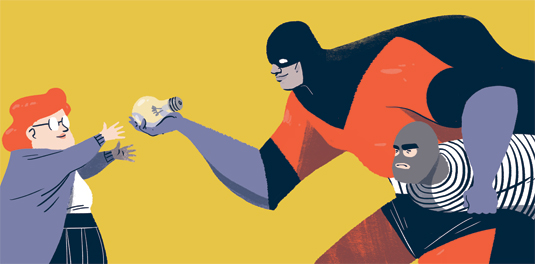Keeping your work on the right side of the law
Avoid the mistake of infringing someone else’s intellectual property by sticking to these rules.

We know it wouldn't be done on purpose, but there are some ways that you could unknowingly infringe upon someone's else intellectual property. Ensure you avoid any copyright accidents with this expert advice.
01. Don't use Google Image search
Lots of creatives tell us this regularly. It's impossible to track where images might come from and who owns them once they're slapped on a mood board, and the slightest error when creating hundreds of project assets can cost you dearly.
02. Don't take on dodgy work
Clients can also be the initiators of copyright issues. If you're asked to produce something you're uncomfortable with, or to copy an existing piece of design by a client who has little or no imagination, walk away – not only will these types of projects do your portfolio few favours; it could see you being labelled a design plagiarist.
03. Don't take chances
Freelancers and smaller studios will most likely be supplied assets and key visuals by the client or client's agency. Don't assume they're all legitimate, though. Services like Image Exchange by Picscout help you trace copyright images.
04. Check your licences
Before you hand over a completed project, check all of the licences that might be associated with the assets. For example, any stock imagery might require a commercial fee; any fonts which are embedded into a UX design or app need the appropriate licences; and make sure you check the time-periods of each licence as well as which countries and formats are included.
Words: Tom Dennis
This article was originally featured in Computer Arts issue 245.
Daily design news, reviews, how-tos and more, as picked by the editors.
Like this? Read these!

The Creative Bloq team is made up of a group of art and design enthusiasts, and has changed and evolved since Creative Bloq began back in 2012. The current website team consists of eight full-time members of staff: Editor Georgia Coggan, Deputy Editor Rosie Hilder, Ecommerce Editor Beren Neale, Senior News Editor Daniel Piper, Editor, Digital Art and 3D Ian Dean, Tech Reviews Editor Erlingur Einarsson, Ecommerce Writer Beth Nicholls and Staff Writer Natalie Fear, as well as a roster of freelancers from around the world. The ImagineFX magazine team also pitch in, ensuring that content from leading digital art publication ImagineFX is represented on Creative Bloq.
